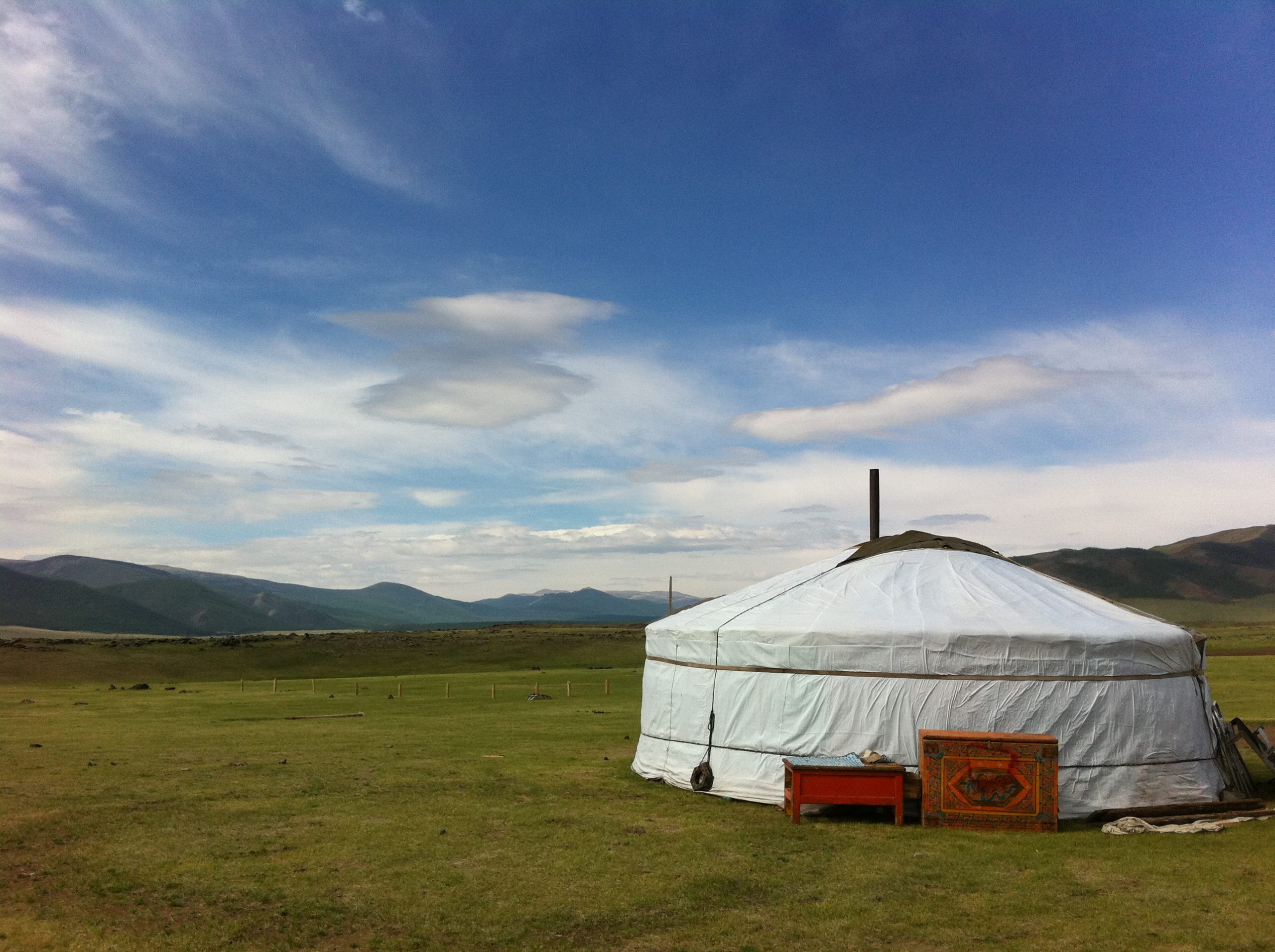To better understand Inner Mongolia, we spoke with Doris Tala Motomura a expert on Inner Mongolia’s history, culture and ways of life
In the conclusion of our interview, we will discuss the land politics of Inner Mongolia, Nomadism and the meaning traditional grasslands have to Inner Mongolians.
You can read part 1 of our interview (on politics) and part 2 of our interview (on Inner Mongolia as a ‘contested imaginary’ in China) here.
Asia Art Tours: A story seems to emerge in Inner Mongolia: Huge Mineral/Fossil Fuel discoveries leads the PRC state to push Inner Mongolians off traditional grazing lands and land-based economies, and into urban locations where occupations are based on factory or service labour. To justify this, the state began associating traditional Inner Mongolian occupations and land with being ‘backward’ and urban centres as being ‘Developed’ or ‘Modern’.
Could you discuss how, traditionally, Inner Mongolians related to the land, land-based economies (e.g. grazing), Mongolian language and their own identity? How did all of these interrelate?
Doris Tala Motomura: Private land ownership is a rather new concept for Mongols. Traditionally, herders shared pasture though they had customary areas, nutug, (home area), to graze their animals. The Qing Dynasty introduced the banner system with territorial and administrative borders that prevented the free movements of both humans and animals. Within the banner borders, however, herders shared the pasture, though some parts of the land were considered to belong to the ruling princes. The Mongolian plateau is about 1,500 m above sea level and has a harsh, long winter, windy spring and hot, short summer. Through their long history Mongols developed all manner of indigenous techniques to exist with their animals in a sustainable way in this environment. The Mongol pastoral economy is the most suited to the environment of the Mongolian plateau because the grassland has very thin, fertile soil which is not suited for grain cultivation. For Mongols a piece of green pasture is a God-given natural treasure, the lifeline of their animals, and thus their livelihood, and part of their identity.
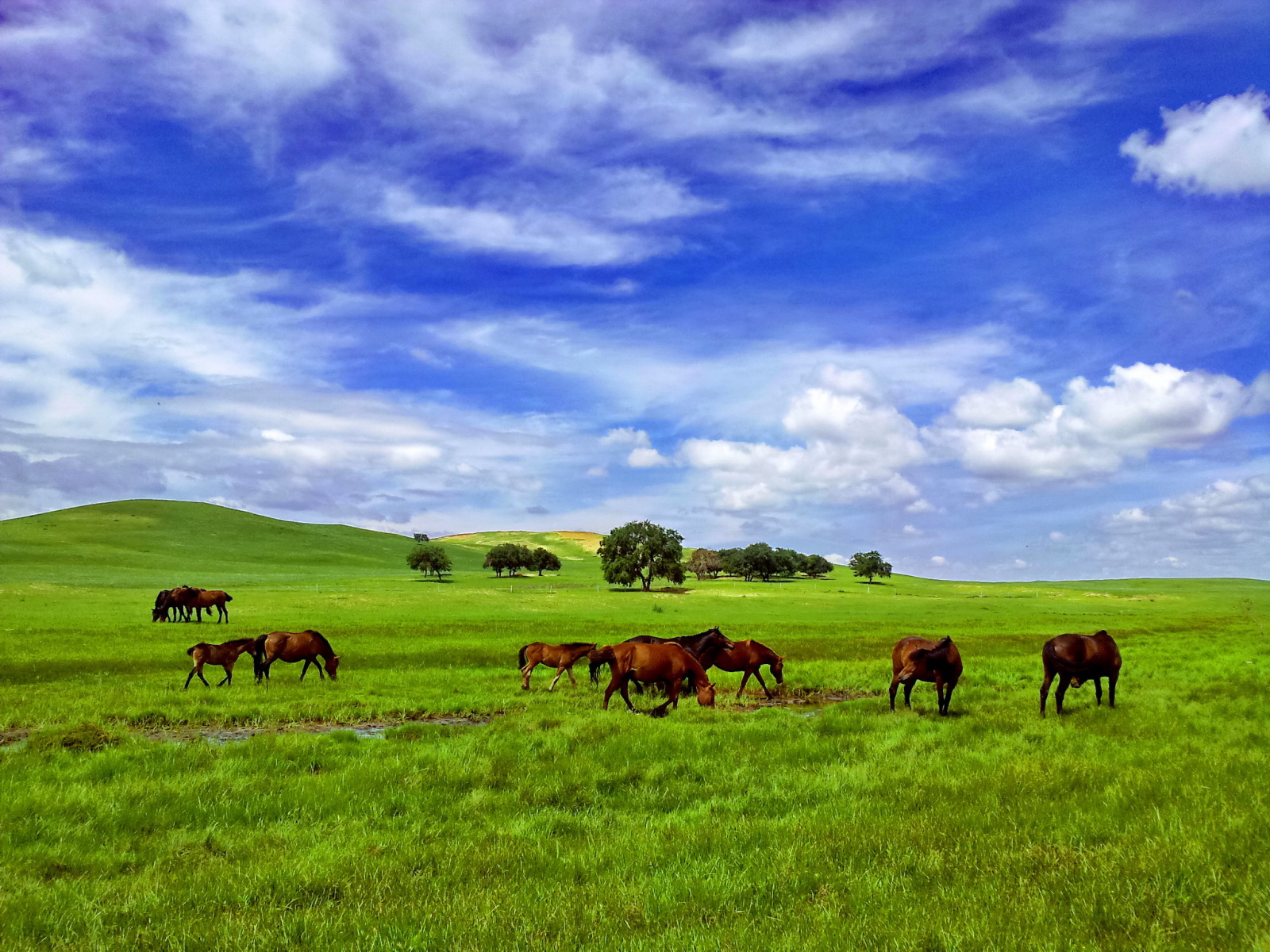
Pasture has to be cared for and should not be tilled or destroyed. Digging holes in the pasture was forbidden in the Law of Chinggis Khan. By contrast, for the Chinese a piece of green pasture is worthless unless it is cultivated to grow grain or to set up some kind of industry. Due to this profound cultural difference between sedentary Chinese and pastural Mongols, there has often been unhappy incidences throughout history, particularly since the rise of the market economy in recent years. The Chinese would drive over herders’ pasture without any concern. It would break their heart to see this sort of barbaric behaviour. The most well-known incidence of this kind happened in May 2011 when a Chinese truck driver drove over a herder who tried to stop him from driving through his pasture in Ujumchin, Shilingool League. This terrible tragic incident caused huge resentment amongst the Inner Mongols. A demonstration was planned but before it was executed the military was brought in to prevent university students from doing it. The driver was reportedly sentenced to death, but this did not change the Chinese attitude towards the grassland. In 2019, for example, a few cars with Chinese tourists from Beijing drove over a herder’s pasture in Shilingool after a rain and made huge damage to the pasture in summer 2019. When the herder protested they made a video clip wrongly accusing the herder for claiming money from innocent tourists and posted it to social media!
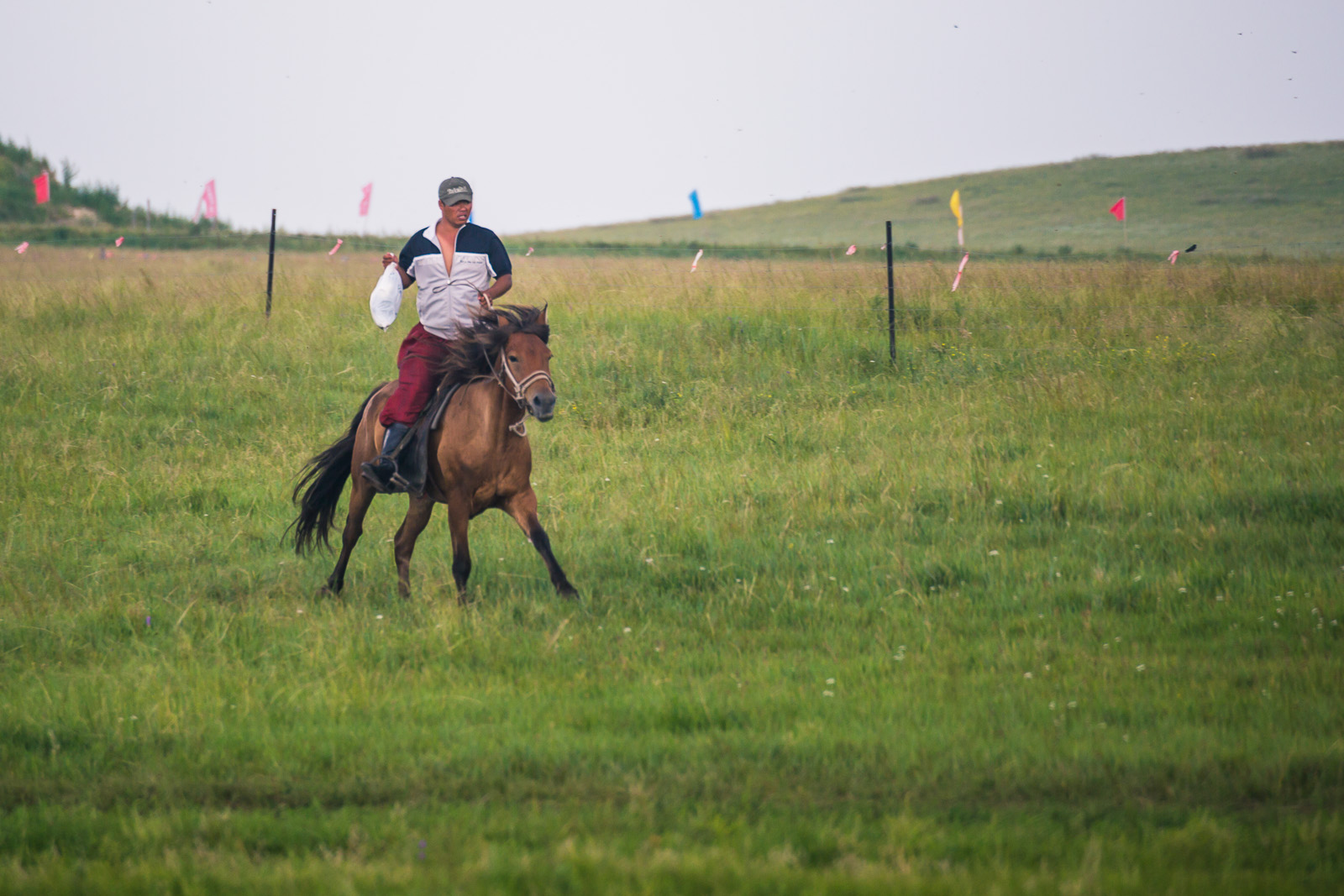 (Inner Mongolian Herder- Photo Credit Sergio Tittarini Shared under CC 2.0)
(Inner Mongolian Herder- Photo Credit Sergio Tittarini Shared under CC 2.0)
The Mongolian herders’ pastoral lifeline has increasingly been reduced. First of all, state planned cultivation of Mongolian grassland started from the late Qing Dynasty as part of its policy to cultivate the frontiers in order to meet its internal economic needs and external threats. The consecutive Chinese Governments continued the policy and expanded cultivation further. In recent years, new industrial development complexes have eaten up huge areas of grassland. It is heart-wrenching to see sheep and goat herds try to find grass to eat between the mining pits and mounds of loose soils from the pits. Cultivation and industrial development have caused desertification and other environmental issues have become a serious problem. Because of the thinness of the Mongol soil, cultivated soil is blown away by the spring wind and nothing much grows again. The state and the media, however, never talk about the agricultural and industrial sources of this desertification, but claim that it is caused by overgrazing. Overgrazing might be true, too, but it in turn has been caused by the reduction of pasture due to more and more land being given over to cultivation and industry.
Mongol herders have been either removed from their home and forced into urban areas or not allowed to graze their animals any longer in the name of ‘environmental protection’. Grasslands are fenced to keep the herds out. Herders who still stick to their old traditions are forced to feed their animals in enclosures in many places. They are also forced to feed their animals even in high summer with grain or genetically modified fermented corn sticks. This has been causing health problems for both the animals and humans. Many cows give births to deformed or disabled calves. Herders who eat the unhealthy milk and meat get sick and thus have to stay home and cannot herd their animals. This also puts mental pressure on the herders because their animals are part of their family and they are deeply concerned about their wellbeing. Some herders cannot bear to see their animals get sick and secretly take them out at midnight to pasture and return early in the morning at 4 or 5 am. When the officials heard about this, they started to crack down by fining herders heavily or taking away their animals. No one with a human conscience should be able to bear watching an amateur video clip secretly taken by a mobile device that shows a crying woman begging the local official and his men trying to take away her sheep. As a herder pointed out poignantly: ‘Nature regulates itself. You cannot protect nature by preventing animals from eating grass.’
 (Inner Mongolian Herders- Photo Credit Sergio Tittarini Shared under CC 2.0)
(Inner Mongolian Herders- Photo Credit Sergio Tittarini Shared under CC 2.0)
Soon, not only will Mongol herders be losing their indigenous herding knowledge, but also their rich language, literature and arts related to pastural culture. The Mongolian language has a rich vocabulary related to pastural lifestyle, nature and animals. Mongols are well-known for their oral traditions and putting anything words to beautiful rhythms spontaneously. They also have rich tradition of blessings in the form of rhymes for the wellbeing and growth of their animals. If the herding culture disappears, then these vocabularies will also soon disappear, followed by their literature, music and other artforms whose creativity comes from the traditional Mongolian pastural way of life.
Asia Art Tours: Could you then discuss how land being privatized or seized by state/private Capital corresponded to Inner Mongolians being pushed into urban centers and occupations? How did this than affect Mongolian Language and Inner Mongolian Identity?
Doris Tala Motomura: Until the legalisation of privatization that began in 1980s, as all other parts of China, Inner Mongols had collectivist system in which people would put their animals in a group and graze them together. Two or three herders from each village community would be responsible for collecting the cows or sheep every morning, herding them together, and bring them back to the village in early evening from spring to autumn. But since privatisation and the arrival of the market economy, the old system has collapsed. Land tenure reform brought with it lots of problems. Relatives and neighbours started to fight among one other over land use and water sources. Traditionally, the Mongols never prevented animals and humans drinking from the same water source, because the Mongolian custom of hospitality is to provide drink and food to any travellers and their animals. Many accounts written by Western travellers in the last few centuries often praised the hospitality of Mongols – how Mongols shared their food even when they did not have much for themselves. But the privatization and market economy has made people egoistic and forget about their old traditions.
 (Inner Mongolian Sunset- Photo Credit Sergio Tittarini Shared under CC 2.0)
(Inner Mongolian Sunset- Photo Credit Sergio Tittarini Shared under CC 2.0)
Land privatization also put the Mongols in a more vulnerable position to lures from outside that promising money and modern life. It also meant an increase in natural disasters. State or private companies buy their land for extractive industries and promise them money or accommodation in modern high rises in urban areas. Urbanization is considered to be a symbol of modernity and living in high rises is considered to be a upgrade from free life in a yurt or a cottage. It is especially attractive for young people who would like to pursue a modern profession and follow the latest pop culture, but not for older people. Moreover, the herders who do remain cannot not survive from the land left over after the rest has been snatched up by private buyers. Often there is barely enough to graze even a handful of animals or produce grain that can sustain their livelihood. Many are therefore forced to move to urban areas to look for jobs.
Another factor that has made herders move to urban areas, as noted earlier, has been the abolition of village level schools in Inner Mongolia from late 1990s. There had been schools in almost every village, but these village schools were taken away a single school was set up for the sum level (district). In general, any sum area has a dozen villages at least. Since not everyone has a car to drive, most kids stay in dormitories or parents have to move to sum centre where the schools are. The sum centres are increasingly filled with businesses are run by Han Chinese. Some well-off parents send their children to even bigger and better schools in the ‘banner’ centres, which are even more urbanized. Thus, primary school children are exposed to Chinese language and distanced from both their home and culture.
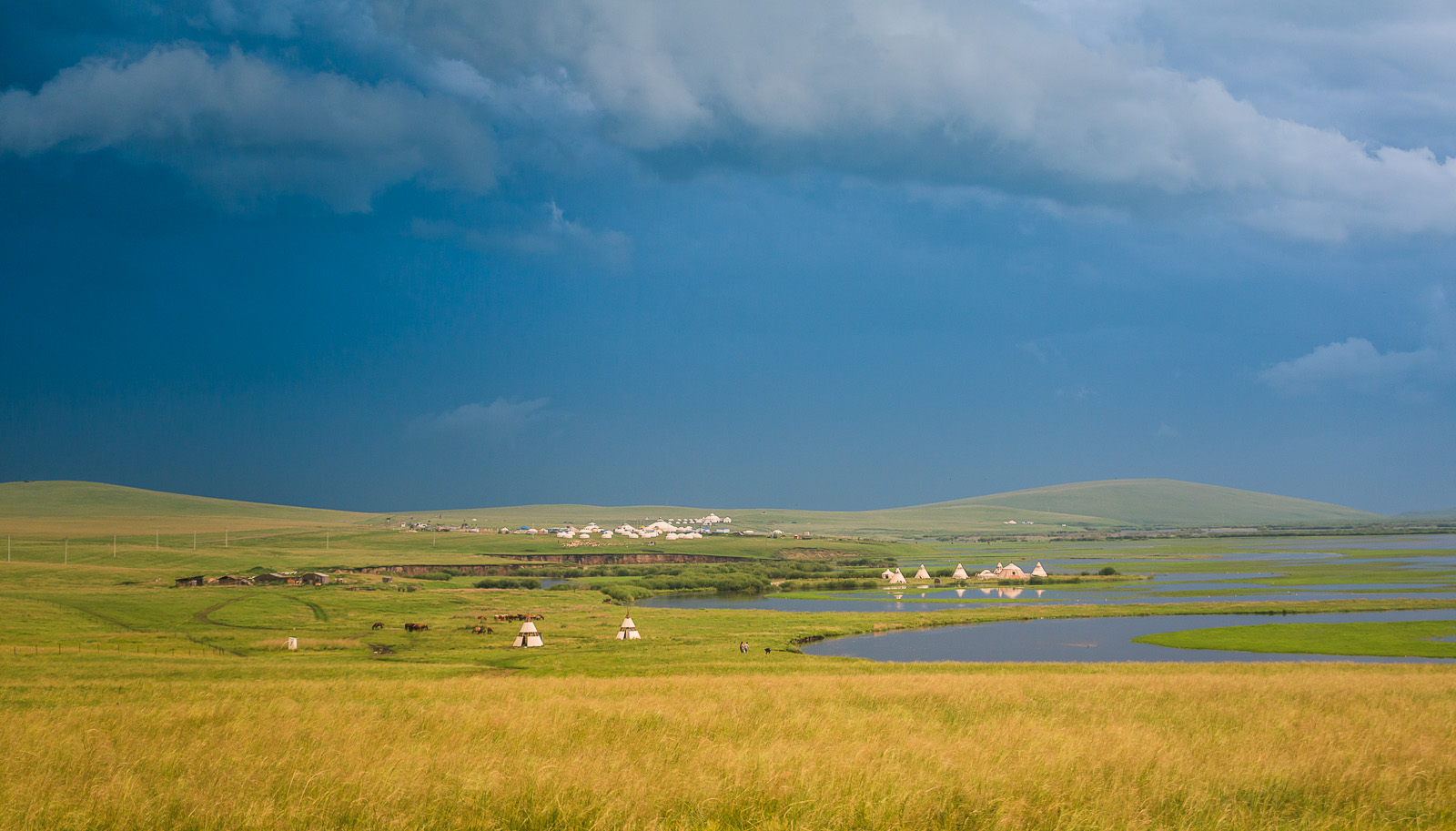 (Inner Mongolian Village- Photo Credit Sergio Tittarini Shared under CC 2.0)
(Inner Mongolian Village- Photo Credit Sergio Tittarini Shared under CC 2.0)
Thus, many villages in Inner Mongolia are mainly inhabited by middle-aged or older people. There are hardly any children except on the weekends on the street. In many places there are hardly even any youngsters to be seen playing in yards wrestling, dancing or playing chess, except on the new year holidays when they come back to visit their parents.
Gereltu’s poem below, though but one of many poems reflecting on Mongolian history and society, captures all this with outstanding insight. It consists of 8 stanzas starting from the time of Chinggis Khan and leading all the way down to the present. The sections I quote here are only those related to recent decades:
Our Mongolian Descendents
…
At the Time of My Grandpa’s Generation
Nature used to be rich and full.
The herds used to fill the grassland and the Mongol land was beautiful.
The pasture used to be wide and long with clean, clearwater.
The people used to be close like brothers and sisters.
At the Time of My Father’s Generation
Producing children as many as they desired,
Rearing herds as many as they could,
Nomadic life was alive with no fences on the pasture.
Horse, goat, sheep, camel and cow grew healthy belonging to the commune
At the Time of My Generation
Dividing up pasture to make private properties.
Fighting over ugly sand brothers make each other enemies.
An exhausted Nature and environment destroyed has brought disasters.
Development by investment capital has put the animals in enclosures.
At the Time of My Children’s Generation
They may point at this land saying ‘this was my nutug (native land)’.
There may be just a few who would become herders.
They may visit with friends and take photos,
Their ownership may be transferred to the kitad (Chinese) from elsewhere
At the Time of My Grandson’s Generation
Nutug (native land) may become an abstract noun only.
Malchin (herder) may become just a heritage term only.
Mongols may probably remain as an ethnicity in memory only.
Mongol culture may probably remain a topic of history only…
Asia Art Tours: Lastly, which came first the ‘chicken or the egg’? Did the necessity of pushing Inner Mongolians off traditional grazing lands lead to the state creating its ‘backwards or developed’ framework for managing Inner Mongolia (and perhaps other regions)? Or did state policy on the management of ethnicities lead to Inner Mongolians being pushed off their land before these valuable resources were later discovered?
Doris Tala Motomura: The simple answer is both. As mentioned above, the public image of Inner Mongolia has been politically generated to emphasise that it is a ‘backward’ place with a ‘backward’ culture and language. The creation of this mass-media image has helped to send a colossal number of Han Chinese to the region in the name of ‘assisting’ in its ‘development’. As also mentioned above, Inner Mongolia is rich in natural resources. When Chinese industry or business are set up, they bring Han Chinese workers and their families. Within a few years, an urban settlement develops around the mines or other industrial complexes in the grassland and herders are pushed out of the pasture.
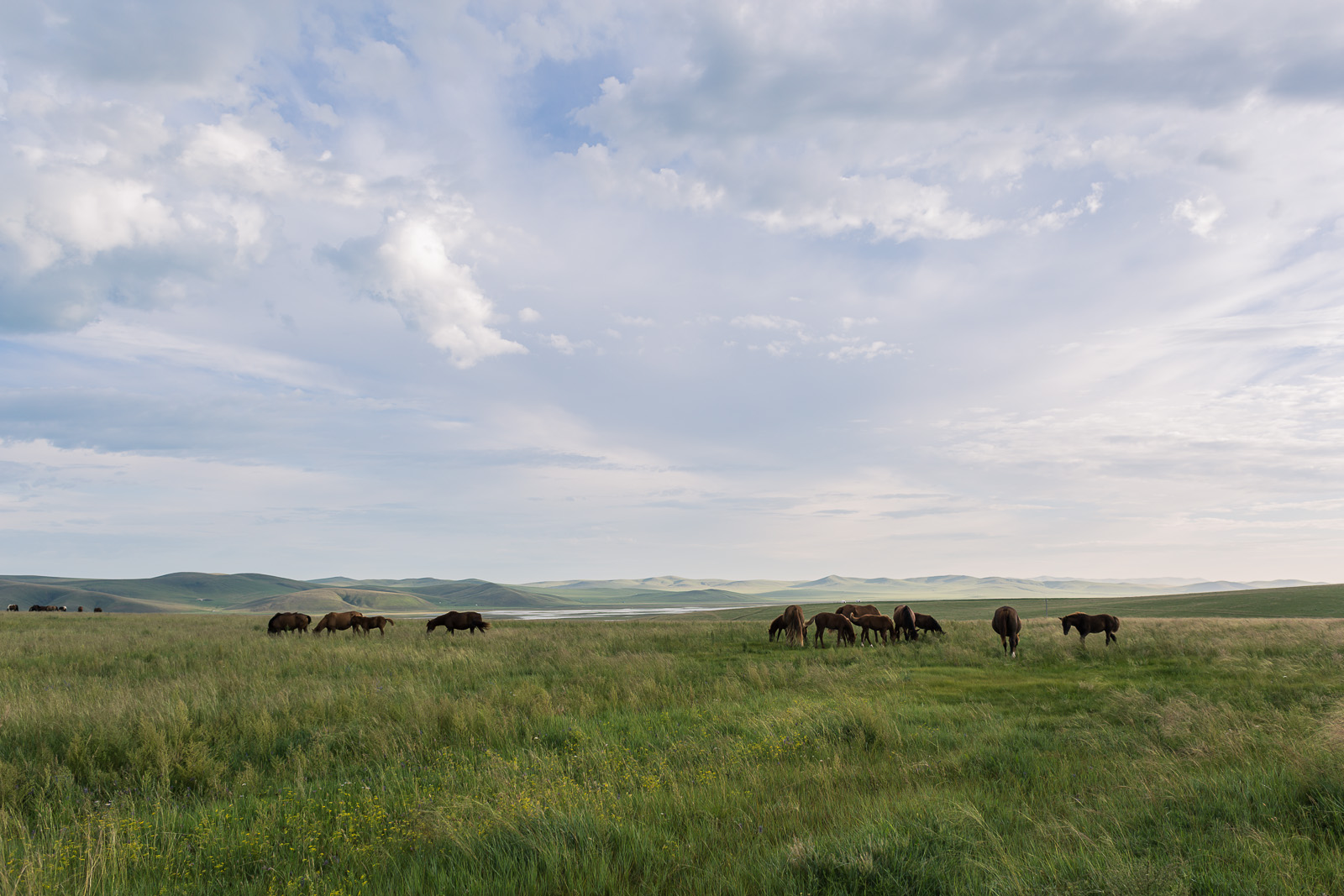 (Inner Mongolian Grassland- Photo Credit Sergio Tittarini Shared under CC 2.0)
(Inner Mongolian Grassland- Photo Credit Sergio Tittarini Shared under CC 2.0)
Recently, the state has announced that it would build some nature parks, probably modelling after the European colonial model of nature conservation. Large areas of Mongolian pasture are to be part of this plan. In some places, trees have been planted to create a create forest and the grassland between different forests is to be preserved. Protecting the environment and advocating nature preservation is a good thing, but for Mongols it means cutting them off from the pasture and thus their livelihoods and herding traditions. For them, this is a way to deterritorialize them. Some compensation has been paid, but this cannot give them a long-term living. If the state can preserve this land as parks, as it proposes, and provide adequate means for herders to survive, then perhaps this might be a good thing for the ecosystem in the long term, but there is no guarantee that these parks will be remain natural park. Since it will be a state-owned park, the state can change its mind at any time to develop that part of grassland without any consultation with the local people. Even if the park remains, the park would not be able to preserve its original wild natural form. The Chinese have a strange way of understanding the beauty of the nature: they would put huge concrete decorations and concrete walking paths everywhere in a park. In the end not much of nature might be left in the park! Moreover, because the Chinese administrative system is so corrupt at all levels, this large transaction of land would offer a great opportunity for businesses to secretly negotiate to take part of the land to develop. I would not be surprised if many urban high rises might soon spring up around the proposed parks which would probably become city parks or gardens of those settlements rather than parks.
 (Inner Mongolian Grassland- Photo Credit Sergio Tittarini Shared under CC 2.0)
(Inner Mongolian Grassland- Photo Credit Sergio Tittarini Shared under CC 2.0)
Asia Art Tours: For those of us who are not Mongolian or are unfamiliar with the region? How can we help? If we agree that these policies are unjust and unfair, how can we support Inner Mongolians and express dissent against these PRC policies in a way that matters?
Doris Tala Motomura:The Mongolian script is the only remaining vertical alphabetic script that is still actively used. If this is endangered it would be a great loss for world heritage. It is better to promote it now before it becomes endangered rather than try to save it when it has gone down the drain. The Chinese state is becoming pushier than ever due to its growing economic power in recent years. It not only violates its own laws against its own citizens but also tries to influence, if not control, the world through the same kind of bullying. Just a few days ago, the Château des Ducs de Bretagne history museum in Nates, which had been collaborating with Inner Mongolia Museum cancelled an exhibition on Chinggis Khan due to the PRC’s interference. The Chinese side demanded that the museum should delete key concepts like ‘Empire’, ‘Genghis khan’ and ‘Mongols’ from the show and rewrite it in line with the China’s new national narrative. How could one hold an exhibition on Chinggis Khan without mentioning his very name and his empire!? ‘Crazy!’, as a Western reader on a social media commented in response to the news. According to The Guardian, the director of the museum said that they made the decision ‘in the name of the human, scientific and ethical values that we defend.’ (https://www.theguardian.com/world/2020/oct/14/china-insists-genghis-khan-exhibit-not-use-words-genghis-khan?CMP=Share_iOSApp_Other&fbclid=IwAR1lL5QFbL8ERl6uxkekpf5drkWre5J8glZP30OV9mGnCUFPbs6LqCfgrhQ) A ‘bravo’ has been given to the French Museum’s decision to ignore the Chinese demands by not only Mongols across the world, but also many others who care about human rights and intellectual and artistic freedom.
China is obviously trying to reconstruct a new national narrative based Han Chinese chauvinism. China has been keen in the past to claim Chinggis Khan, the Khan who ruled most of the world, in order to legitimise its territorial expanse, despite Lu Xun’s, a Chinese writer and nationalist, warning that Chinggis was not a Chinese in early 20th century. But perhaps the Chinese and Chinese government have started to realize that he was not so ‘Chinese’ after all. Moreover, China probably now feels strong and powerful enough to claim its own influence over the world, imagined or real, without need for the glory of Chinggis Khan any longer. This is not the first time that China has tried to interfere in intellectual and artistic freedom abroad and it won’t be the last time. The important thing is that the world should keep expressing its dissent. Many Chinese intellectuals and artists within China have been critisizing the government, expressing their dissent via social media and wishing for a change.
(The Music Video ‘Xiger Xiger’ filmed in Inner Mongolia by Inner Mongolian Band- Hanggai. Video Credit: Youtube)
For more w. Doris & Inner Mongolia – Read Part 1 and Part 2 of our interviews.

